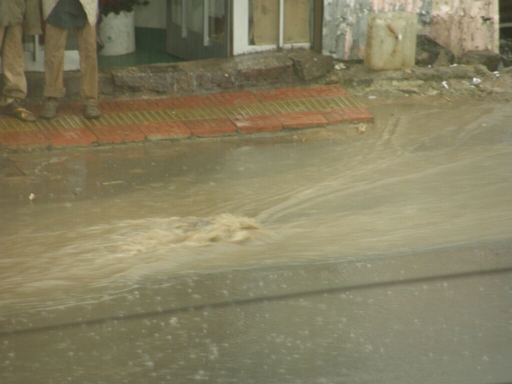6.1.2 Increased area of hard surfaces
The construction of urban areas increases the area of hard surfaces such as roofs, roads, and pavements. Unlike the natural land cover they replace, these hard surfaces are impermeable, meaning water cannot pass through them. When rain falls it does not infiltrate into soil and groundwater but instead pours off the surface very quickly. Water collects in gutters and drains and flows directly into rivers and ditches, which rapidly fill up and can overflow. The volume and speed of the flow of run-off leads to frequent flooding in many city areas (Figure 6.1). These problems are made even worse if there is no drainage system or if drainage is inadequate or becomes blocked with rubbish.

In addition to the effect on the water cycle, the increase in hard surface area also influences the exchange of energy with the atmosphere, which can lead to localised changes to the weather and climate. In large cities the temperature can be a few degrees warmer than in surrounding rural areas, an effect known as an urban heat island. This is caused by the hard surfaces of roads and buildings, which absorb energy from the sun and radiate heat into the surrounding air to a much greater extent than natural vegetated surfaces, especially at night. The raised temperature can increase the impact of poor air quality on people’s health.
6.1.1 Decrease in natural and agricultural land
